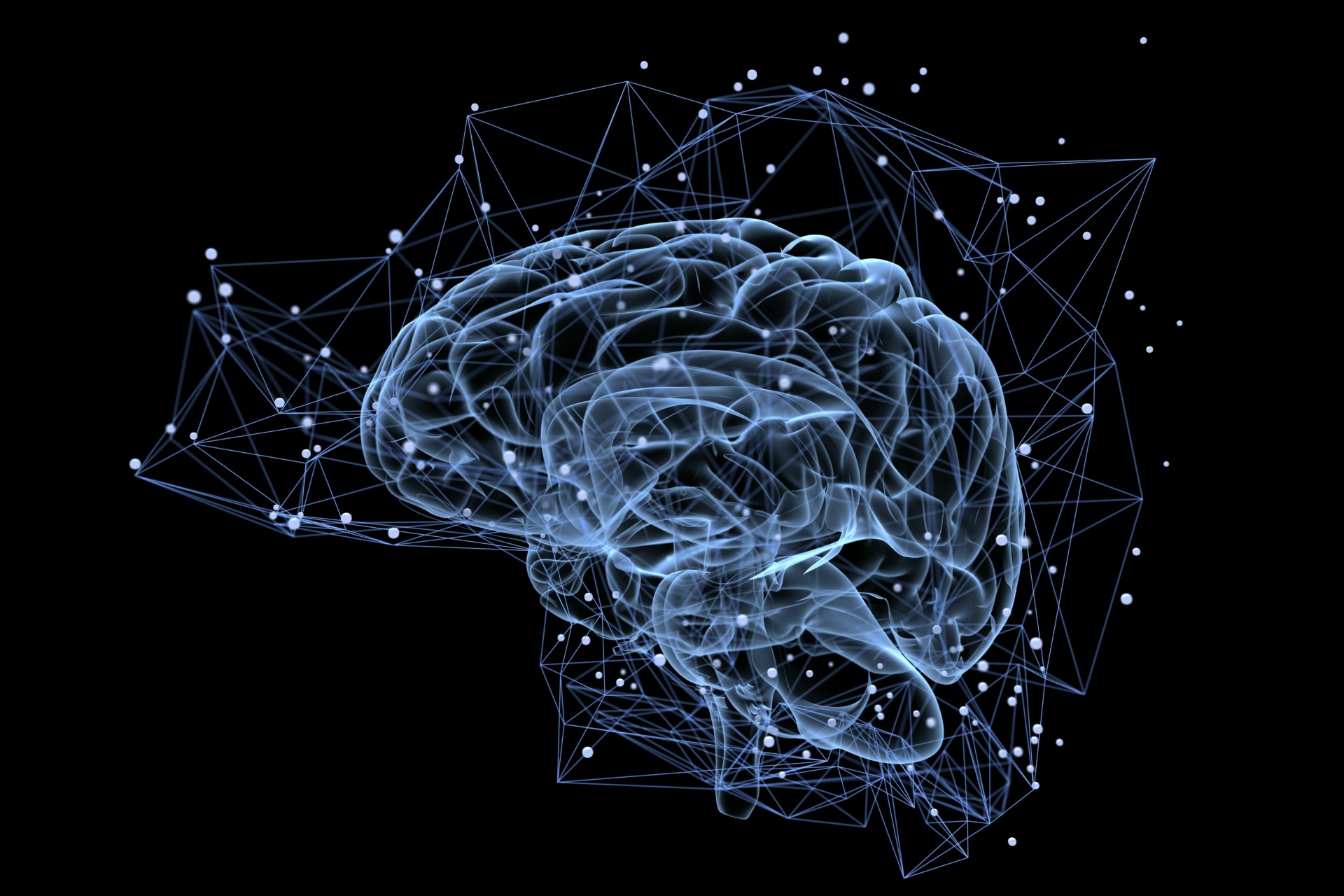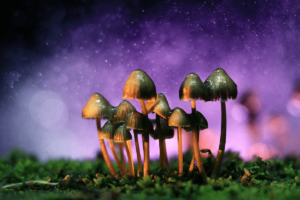The Default Mode Network (DMN) is the state of your brain at rest. Research shows that interrupting the Default Mode Network with psychedelics can provide a sense of relief and increased connection. Read on to learn more.
In 2001, Dr. Marcus Raichle coined the term “default mode” to describe the state when our brains aren’t engaged in an active task, like solving a math problem or learning a new job. The Default Mode Network (DMN) is often associated with activities such as daydreaming, self-reflection, worrying about the past or feeling anxiety about the future. The DMN is also where we create the picture of ourselves. The DMN is central to the story we tell ourselves about who we are and where we want to go.
The DMN is an interconnected series of structures within our brain. There is some debate as to which parts of the brain are involved, but generally, there is consensus that the prefrontal cortex, the posterior cingulate cortex and the inferior parietal lobule are included.
Functional magnetic resosonance imaging (fMRI) scans indicate that when our brains are resting, or we’re “thinking” without a specific goal in mind, the DMN regions of the brain show higher levels of activity and blood flow. Research also shows that increased activity within the DMN is linked to mental health disorders such as depression and anxiety. Changes in the DMN, whether it is too much activity or too little, have also been linked to diseases such as Alzheimer’s disease, autism, PTSD and bipolar disorder.
The DMN also allows us to perform repetitive tasks and actions without thinking much about them. For instance, many of us may have the experience of driving home but not remembering it, yet we get back safely anyway. It turns out that rote memory is much easier than conscious thinking, and close to 50 percent of the time, we are tuning ourselves to autopilot, which is regulated by the DMN.
While in this frame of mind, it may feel like you are doing something instinctually, and your brain no longer needs to focus. For this reason, whenever possible, the adult brain will try to switch over to save energy. The stories we tell ourselves, a multitude of actions we perform and much of our daily existence is controlled by a network in the brain on autopilot—which may or may not work in our favor.
Interrupting the Default Mode Network with Psychedelics
It’s believed that the over-activity within the DMN, and its grip on our conscious and unconscious actions, play a central role in mental health disorders. Studies indicate that when activity is decreased, which is the case when psychedelics are administered, a depressed or anxious person will often feel a sense of relief, as well as an increased sense of connection—often for several months.
Scientific interest in studying psychedelics runs in parallel with the desire to treat intractable mental health disorders. In 2016, a study published in The Journal of Psychopharmacology by researchers at the Johns Hopkins University School of Medicine stated, “High-dose psilocybin produced large decreases in clinician- and self-rated measures of depressed mood and anxiety, along with increases in quality of life, life meaning and optimism.” Another 2016 study, published in Lancet Psychiatry, found that when psilocybin was administered to patients with treatment-resistant depression, “depressive symptoms were markedly reduced one week and three months after high-dose treatment.”
A Brazilian study looked at the rapid antidepressant effects of the psychedelic ayahuasca (dimethyltryptamine, also known as DMT) in treatment-resistant depression. The study concluded that “significant antidepressant effects of ayahuasca, when compared with placebo at all time…brings new evidence supporting the safety and therapeutic value of ayahuasca, dosed within an appropriate setting, to help treat depression.”
Researchers agree that the resetting of the DMN may play a significant role in reducing mental disorder symptoms. A 2023 study by the Imperial College of London tracked experiential responses within 20 participants while consuming DMT. Brain scans indicated that while under the influence, separate portions of the brain made new connections with one another while the DMN was mainly in sleep mode.
But how does this happen?
Psychedelics: Effects on the Human Brain
Psychedelics, such as psilocybin, LSD and DMT act as serotonin receptor agonists. When you consume a psychedelic, the active ingredient psilocin creates the psychedelic “trip” we experience.
Serotonin receptor agonists do not harm the brain; they naturally bind with the serotonin receptors within our minds. Psilocin, for instance, is a replica of the serotonin molecule we produce. It does not harm the receptor and is a copy of serotonin, which is often called “the happy chemical,” as it contributes to our sense of well-being.
Once the serotonin agonist binds to our serotonin receptors, something remarkable happens. A 2012 study at the Imperial College of Medicine found that after psilocybin was administered, blood flow decreased to the DMN, interrupting normal activities. When this occurs, neuroplasticity within the brain begins.
As the DMN’s capacity diminishes, normal signals within the brain are not able to run down the same neural networks. As a result, the brain automatically creates new neural pathways and alternative ways to exchange information.
Researchers from a 2014 study observed when the DMN is suppressed by psychedelics, the overall communication of neurons within the brain is wildly enhanced. New connections are made across the brain, essentially creating “cross-talk,” which is usually unavailable to us. The long-range effect is that separate areas of the brain connect and process information differently. fMRI scans show that brains under the influence of certain psychedelics resemble the minds of people who have active meditation practices.
When we switch off the DMN, we unlock new potential within the brain. Some liken interrupting the Default Mode Network with psychedelics to a “reset button,” allowing us to return to a more childlike mindset, and to see the world in a new way. It’s believed that the brain’s capacity to reset itself and create new forms of communication, in lieu of the DMN, is one of the primary reasons psychedelics may be a solution for so many treatment-resistant mental health disorders.






